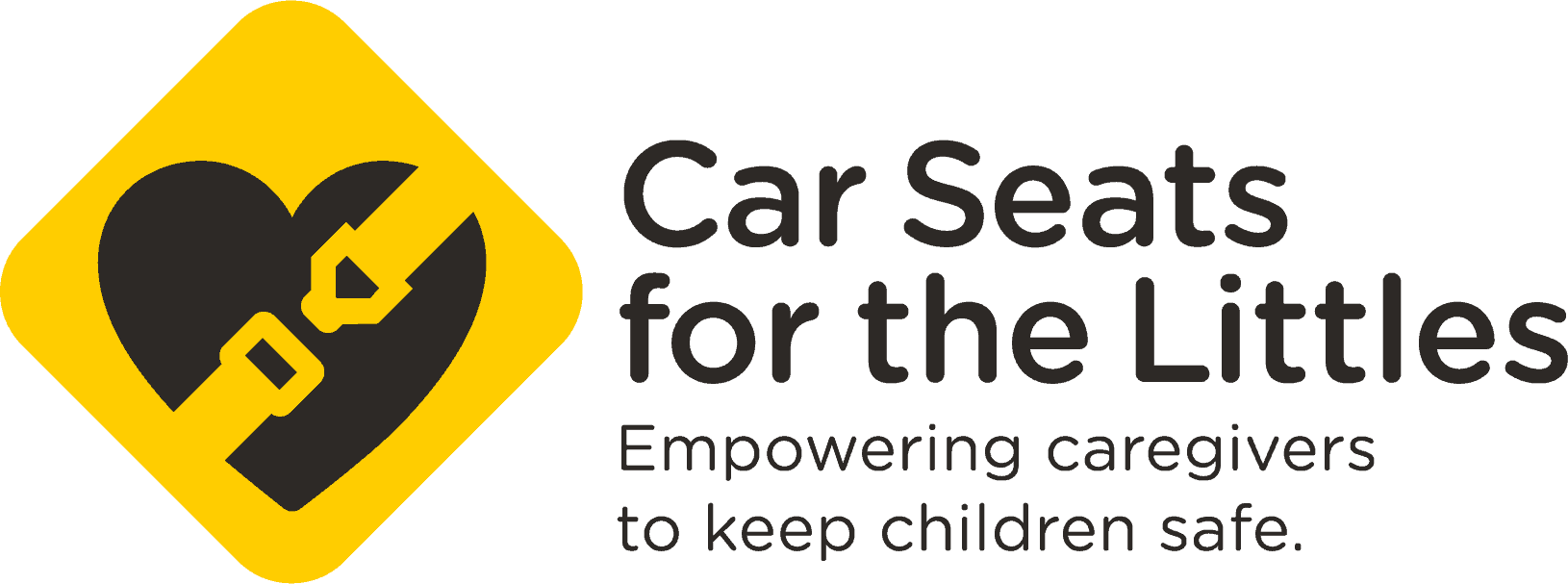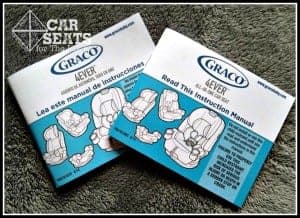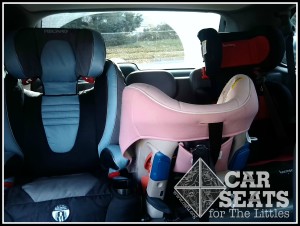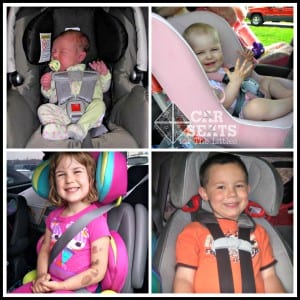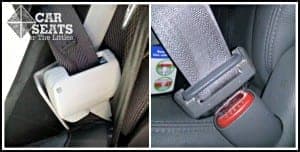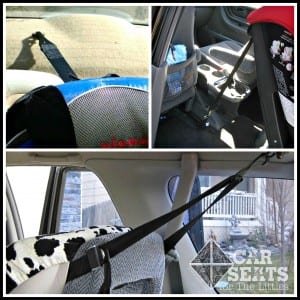You’ve chosen the car seat and you’re ready to install it. Where does it go? Middle? Sides? Use the lower anchors? Seat belt? Tether the car seat or not? All of these things need to be considered when choosing that perfect spot for the car seat. First things first.
Have you read the manual? This needs to be done before ever trying to install the seat. There are many quirks in the various car seats on the market. There is no one way to install all car seats; you have to read the manual. Check the weight, height, and fit limits of the car seat for all modes of use. It will hold the answers to most questions. If it doesn’t, check your vehicle manual. It will usually hold the rest of the answers. If you’re still confused, it will have the contact information of the manufacturer so you can ask them directly. Most car seat manufacturers have phone numbers, e-mail, as well as Facebook and other social media pages. Manufacturers are more available now than ever before. Read more about what can be found in your manual here.
Where does the car seat go? Unless you happen to drive a single cab pick-up truck where the air bag can be manually turned off, the answer is usually that the car seat will be in the back seat. This is what the University of Buffalo has to say about the back seat:
“They found that occupants of the back seat are 59 percent to 86 percent safer than passengers in the front seat and that, in the back seat, the person in the middle is 25 percent safer than other back-seat passengers….After controlling for factors such as restraint use, vehicle type, vehicle weight, occupant age, weather and light conditions, air-bag deployment, drug results and fatalities per crash, the rear middle seat is still 16 percent safer than any other seat in the vehicle.” See more at: http://www.buffalo.edu/news/releases/2006/06/8026.html#sthash.28zaXKmq.dpuf
Are there other children in the vehicle? The middle position is best reserved for the most vulnerable child. We know rear facing seats provide the most protection. When multiple children are in the vehicle, the middle would generally be reserved for those no longer rear facing. This doesn’t always work when installing three car seats in one row.Read more about three across in vehicles here. The need for things like school drop off lines or lack of shoulder belt in the middle might trump the ideal. When parents have only one car seat the recommendation is almost always to use the middle seating position. Later I will discuss more about installing in the middle position.
Is the middle accessible? There are some really large vehicles out there and some very petite parents. While middle might be considered the safest, if the parents cannot get the child in and out of the vehicle, it won’t do them much good. Other concerns may include health concerns limiting range of motion for getting into the middle position etc.
Does the seat go rear facing or forward facing? You will need to consider the various modes in which the seat can be used. Is it a rear facing only seat that goes to 30 pounds or 30″ or a convertible car seat that goes both rear facing and forward facing? For a child under two, rear facing is the only appropriate choice. For a child over two, does he meet the requirements to rear face or forward face? Read why rear facing is still the safest option. If it’s a combination car seat or dedicated booster seat, the seat can only go forward facing.
Does the car seat fit in the middle? Almost all car seats cannot brace against the front vehicle seats; meaning they cannot be forcefully touching. This is not only because of the way the seat was tested but due to safety measures in the vehicle itself. If a car seat doesn’t fit in the middle, particularly if the driver is very tall, the car seat may need to be installed behind the passenger seat or a new car seat may need to be chosen. The middle of various vehicles can look very different. Some vehicles will have lap only seat belts, some have seat belts that come from the ceiling, and some vehicles will have a hump in the middle seating position or a console. The vehicle manual will need to be checked again to see if a car seat is able to be installed in that position, or if any measures need to be taken prior to installing the seat. For example, the Chevy Equinox comes with a bungee cord to attach the center console to the tether anchor so that position can be used for a rear facing seat.
Do you install with the lower anchors? This is a much bigger decision than it sounds. All current car seats can be installed with either seat belt or lower anchors, but not all vehicles are equipped with lower anchors. Those vehicles equipped with lower anchors aren’t generally equipped in all seating positions. Vehicles model year 2003 and newer are required to have two seating positions that have lower anchors. Due to this, many vehicle manufacturers only put them in the outboard seating positions, not the middle. There are both vehicle manufacturers and car seat manufacturers that prohibit ‘borrowing’ those out anchors to install a car seat in the middle seating position. You will need to again read both your vehicle manual and car seat manual. Lower anchors also have weight limits.Read more about that here. After the limit is met, the car seat must then be installed with the seat belt. Keep in mind that seats must pass all applicable testing with both seatbelts and lower anchors. They are both safe.
Do you install with the seat belt? A seat belt is almost always allowed for car seat installation. Do you have inflatable seat belts? Few car seats allow installation with inflatable seat belts. You will need to decide what to do after the lower anchor weight limits have been met if your seat does not allow for use with inflatable seat belts. You must lock your seat belt to keep the car seat tightly installed. Seat belts lock in several ways depending on the vehicle’s model and year. Read more here about locking your seat belts here. You will need to read both your vehicle manual and car seat manual to answer these questions.
Do you use the tether? If your car seat is forward facing with a harness, the car seat needs to be tethered. We know tethering greatly reduces the risk of injury for forward facing children and the tether should be used if at all possible. Vehicles model year 2001 and newer are required to have three tether anchor positions, which means many vehicles that seat 6+ may have several positions without tether anchors, particularly in the third row. The non tether positions are best reserved for non-forward facing seats. For older vehicles without tether anchors, anchors can sometimes be retrofitted. If you have a Britax, Peg Perego, Combi, or Diono convertible, your car seat also has the ability to tether while rear facing. There will be instructions in your car seat manual on using the tether in the rear facing position. Some vehicle manufacturers will tell you they cannot recommend tethering when rear facing because it is not in the vehicle manual. This leaves it up to the parent on if they choose to tether when rear facing or not.
How tight should the seat be installed? A car seat should be installed so that there is less than one inch of movement side to side or front to back; testing with the force of a firm handshake at the belt path. You can get more information and see a great visual here. You also need to make sure you are using the correct belt path for the direction of the seat. Convertible seats have one belt path for rear facing and a different one for forward.
These are some great tips to get you started on your installation process. The best thing you can do though is read both your vehicle and car seat manuals and to find a CPST to help educate you on the installation and use of your new car seat. You can look for CPSTs in your area here. The National Highway Traffic Safety Administration states an 80% misuse rate when it comes to using and installing car seats. This supports how important it is to see a CPST to help ensure you are in the 20% using and installing their car seat correctly. Maybe you read this first and have yet to choose a seat. You can see our full recommended list of car seats here.
